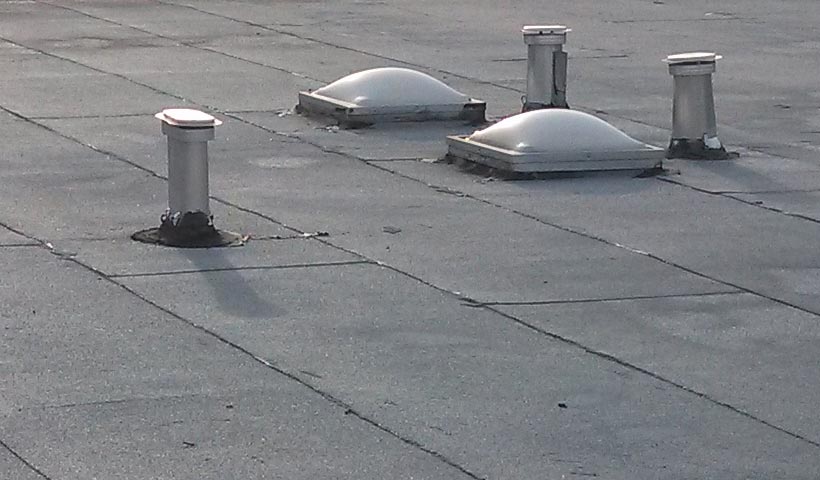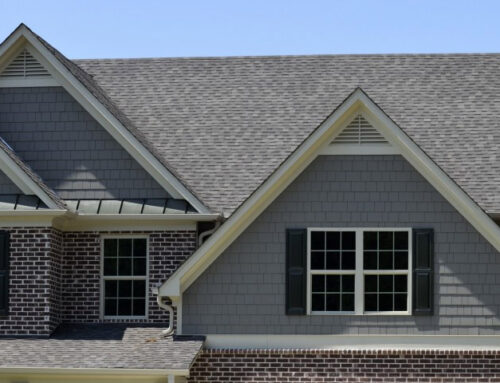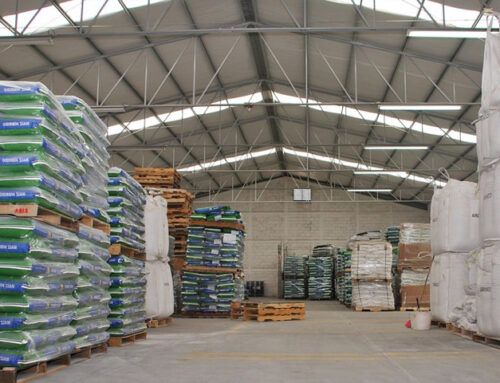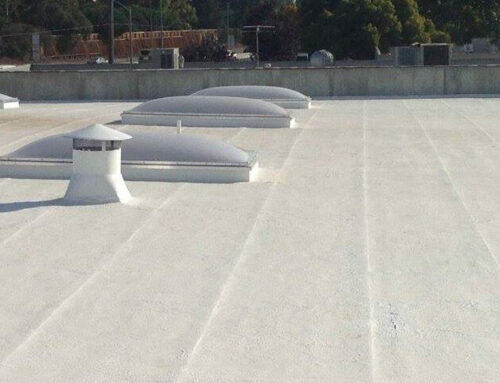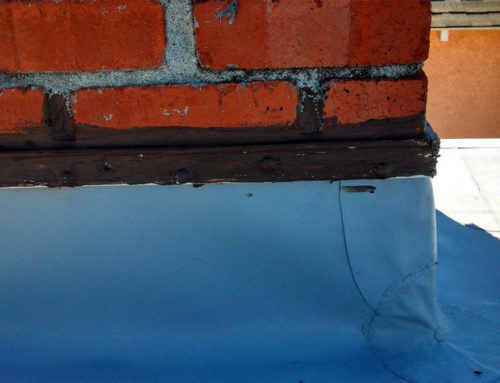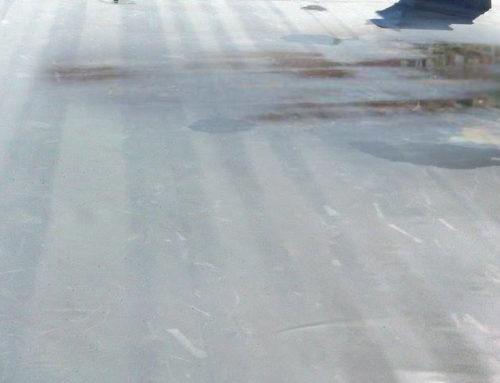You know that roofers install vents on residential roofs, but what about your commercial flat roof? How much ventilation does a flat roof need? The answer depends on the type of roof you have: a cold roof or hot roof.
Any type of roof, from TPO to EPDM, can be either hot or cold. It depends on where the insulation is installed. Starting from the bottom, hot roofs have the roof deck, then insulation, then the roofing material. Cold roofs have insulation beneath the roof deck, which is beneath the roofing material.
Hot roofs are not supposed to have vents and cold roofs are—but why? And, is a ventilated roof a better choice for you?
Why Do Some Flat Roofs Need to be Vented?
Especially during the winter, you might wonder why your roof needs vents. After all, aren’t those vents letting your warm, conditioned air escape outside? A little bit, but ventilation is still key to prevent some serious problems that might develop in your building otherwise.
Warm air rises and will naturally collect in your home beneath the roof. If you have a hot roof, this warm air changes the temperature of your roof decking, as it doesn’t have ventilation to relieve the heat. The difference in temperature between the roof deck and the outside air causes condensation.
You’ve probably experienced this affect when you get into your car on a cold morning. You turn on the heat, and the window develops some frost.
In a roof, that thin layer of condensation is a big problem. It can slowly rot out decking and your roofing materials, even dripping down onto whatever is beneath it. So, either you need to have very good insulation to protect the roof from the heat of the building, or that moisture and heat needs a way to vent outside. Vents ensure that a roof will be the same temperature as the air outside of it.
That’s not to say that roof ventilation is only valuable in the winter. In the summer, differences between your roof temperature and the outside air can still cause condensation, especially interstitial condensation—or water trapped in the layers of your roof.
Cold Roofs
Cold roofs have ventilation, which allows heat to escape from beneath the shingles.That means the rest of the roof is the same temperature as the outdoors. Our building is still protected from the outdoor temperatures with insulation. A cold roof really is colder than the rest of your building in the winter, which means condensation is much less likely to develop.
If you have a hot roof, you may want to switch to a cold roof system to preserve the quality and lifespan of your insulation and your roof.
How Much Ventilation does a Cold Roof Need?
If you have a cold roof or are getting one installed, how much ventilation will it need? That depends on a few different variables, including the size of the roof, the roofing material, and what the building will be used for. Also, your building codes may dictate how many and which kind of vents you need to use.
If you’re concerned about your building’s insulation the best thing to do is talk to your roofer. They can explain local codes and how many vents they intend to install on your roof. If you’re still concerned, you can always get a second opinion from another roofer.


